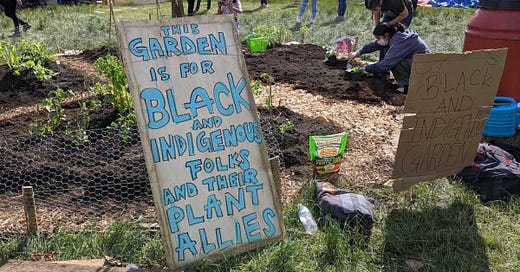Build Your SHTF Garden Spot Now
As I grow older, I find myself acquiring and planning with a mindset of “just in case”. I’m not a doomer, but I like to have something available just in case I ever need it.
Gardening is a rewarding activity that not only provides fresh produce but also ensures you have a sustainable source of food if the need ever arises. Here's a step-by-step plan for anyone with a backyard to slowly build a garden spot with optimal growing conditions over time.
Why Prepare a Garden Spot?
While you may never need to grow your own food, having a ready-to-use garden spot can be a valuable asset in case of emergencies. It’s better to prepare gradually than to struggle when the need arises. We all remember the infamous Chaz Garden – a makeshift effort that failed due to lack of preparation and knowledge. You need jacked soil. Avoid such pitfalls by building a garden with well-prepared soil.
Soil Building Basics
Good soil is crucial for a successful garden. The basics of soil building involve creating a weed-free space rich in organic matter and nutrients. Instead of buying expensive products, you can improve your soil over time by adding compost and organic materials.
Step-by-Step Guide
1. Choose Your Garden Location:
Find a level area in your yard that receives plenty of sunlight, preferably in the morning and early afternoon.
Ensure the spot has access to water.
2. Prepare the Soil:
Obtain a large black tarp. Old billboard tarps work well and can often be acquired for free from local advertising companies.
Spread the tarp over your chosen location and leave it in place for several months to kill weeds and grass.
3. Gather Materials:
Find a free source of wood chips. Local tree services or municipal compost facilities often provide these for free.
Start composting kitchen scraps, yard waste, and other organic materials.
4. Initial Soil Preparation:
After several months, remove the tarp. The vegetation underneath should be dead.
Conduct a soil test to determine nutrient levels and composition. This will help you understand what amendments are needed.
Use a broad fork to break up compacted soil. This tool aerates the soil without disturbing the soil structure excessively. This step is crucial and should be done thoroughly at the beginning.
Add biochar to your soil to enhance nutrient retention and promote beneficial microbial activity.
5. Add Organic Matter:
Spread compost and wood chips over the entire area. These materials will break down over time, enriching the soil with nutrients.
Cover the area with the tarp again. This helps retain moisture, encourages beneficial microbial activity, and prevents nutrient loss.
6. Maintain and Improve:
Regularly add compost under the tarp. You can simply dump your compost bucket in the garden spot and spread it out.
Continue adding wood chips and organic matter as you acquire them. Keep the area covered to maintain optimal conditions for soil health.
7. Retest the Soil:
After a year, retest the soil to monitor its progress and determine if any further adjustments are needed. This will help you ensure that your soil remains healthy and ready for planting.
Ongoing Care
Over time, the soil will improve, becoming rich in organic matter and nutrients. The key is patience and consistent addition of organic materials. With each season, your garden spot will become more fertile, ready to support healthy plant growth whenever you decide to start planting.
By following this plan, you can build a garden spot with Chad soil – rich, fertile, and ready for any scenario.
Next Steps
If you follow this plan, the next logical steps would be to acquire seeds. Start with a good cover crop like Ryegrass or Hairy Vetch. The plan would be to spread these seeds heavily in the early fall and let it grow wild over your entire garden area.
When spring comes you would simply cover it with a tarp to kill the cover crop and plant your seeds or plants directly in the dead cover crop rich soil. This will be your source of nitrogen.
By now you’ll be well on your way to going down the deep gardening rabbit hole. Who knows, you may get bit by the bug and go crazy growing food just like me!
Happy 4th Ya’ll
Farmer





